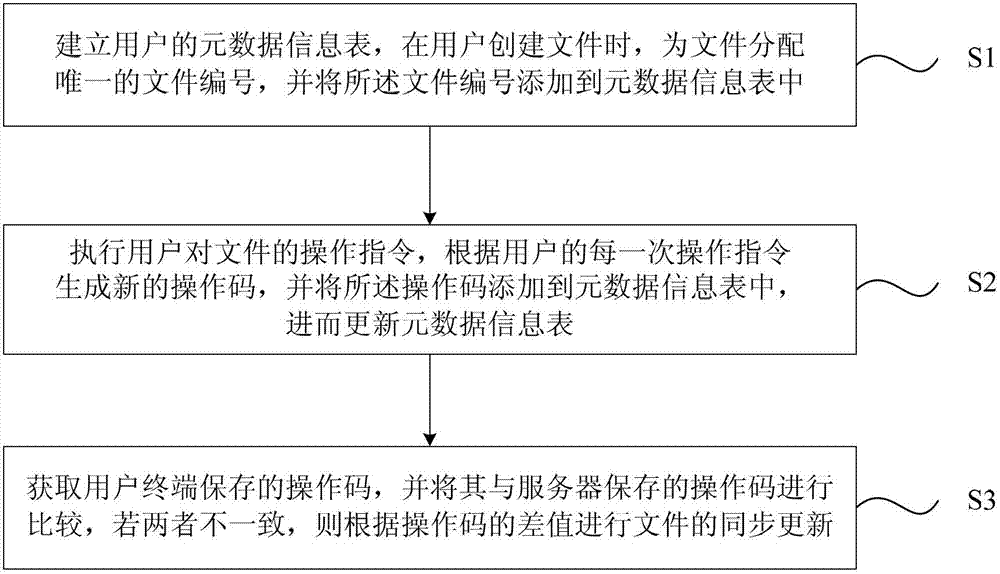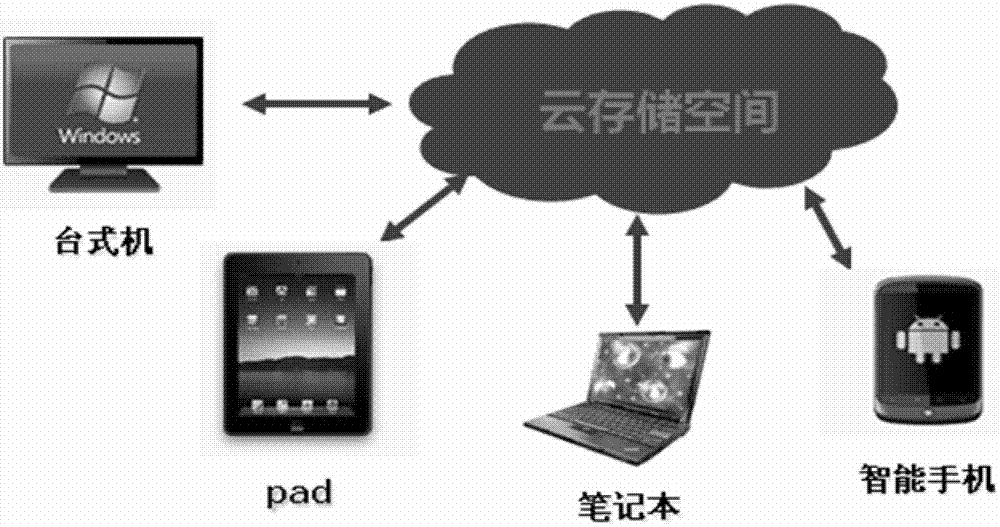Cloud synchronized method of files and cloud storage server
A server and file technology, applied in the field of cloud storage, which can solve the problems of inability to track and restore historical versions, inability to download only increments, and difficult data structure, achieving the effects of simple structure, reduced pressure, and easy expansion.
- Summary
- Abstract
- Description
- Claims
- Application Information
AI Technical Summary
Problems solved by technology
Method used
Image
Examples
Embodiment 1
[0033] In this embodiment, a cloud storage server is provided, which is used for performing file synchronization processing among different terminals. Such as figure 1 As shown, the server specifically includes: a control module 11 , an update module 13 and a synchronization module 15 .
[0034] The control module 11 is used to manage the user's cloud storage space, establish the user's metadata information table, assign a unique file number to the file created by the user, and add the file number to the corresponding metadata information table. The file number (FileGuid) is the unique tag number of the file, it will not be repeated, and it will accompany the entire life cycle of the file. When a file is created, the FileGuid is generated and assigned by the server. Operations such as modifying, moving, and renaming will not change the FileGuid until the file is deleted. There are many ways to realize the unique file number in the prior art. For example, in GUID, the unique ...
Embodiment 2
[0039] This embodiment provides a cloud synchronization method for files, such as figure 2 As shown, the method specifically includes the following steps:
[0040] Step S1, creating a metadata information table for the user, assigning a unique file number to the file when the user creates a file, and adding the file number to the metadata information table. This step is performed by the control module 11 .
[0041] The specific usage scenarios of this embodiment are as follows image 3 As shown, the user has multiple terminal devices, including: terminal A is a desktop computer in the office, terminal B is a personal notebook, and terminal C is a smart phone. During initialization, the user's cloud storage space is empty, and terminals A, B, and C correspond to the same cloud storage space. After the user logs in, the server creates a metadata information table for the user, A's local operation code (hereinafter referred to as operation code A), B's local operation code (h...
PUM
 Login to View More
Login to View More Abstract
Description
Claims
Application Information
 Login to View More
Login to View More - R&D
- Intellectual Property
- Life Sciences
- Materials
- Tech Scout
- Unparalleled Data Quality
- Higher Quality Content
- 60% Fewer Hallucinations
Browse by: Latest US Patents, China's latest patents, Technical Efficacy Thesaurus, Application Domain, Technology Topic, Popular Technical Reports.
© 2025 PatSnap. All rights reserved.Legal|Privacy policy|Modern Slavery Act Transparency Statement|Sitemap|About US| Contact US: help@patsnap.com



